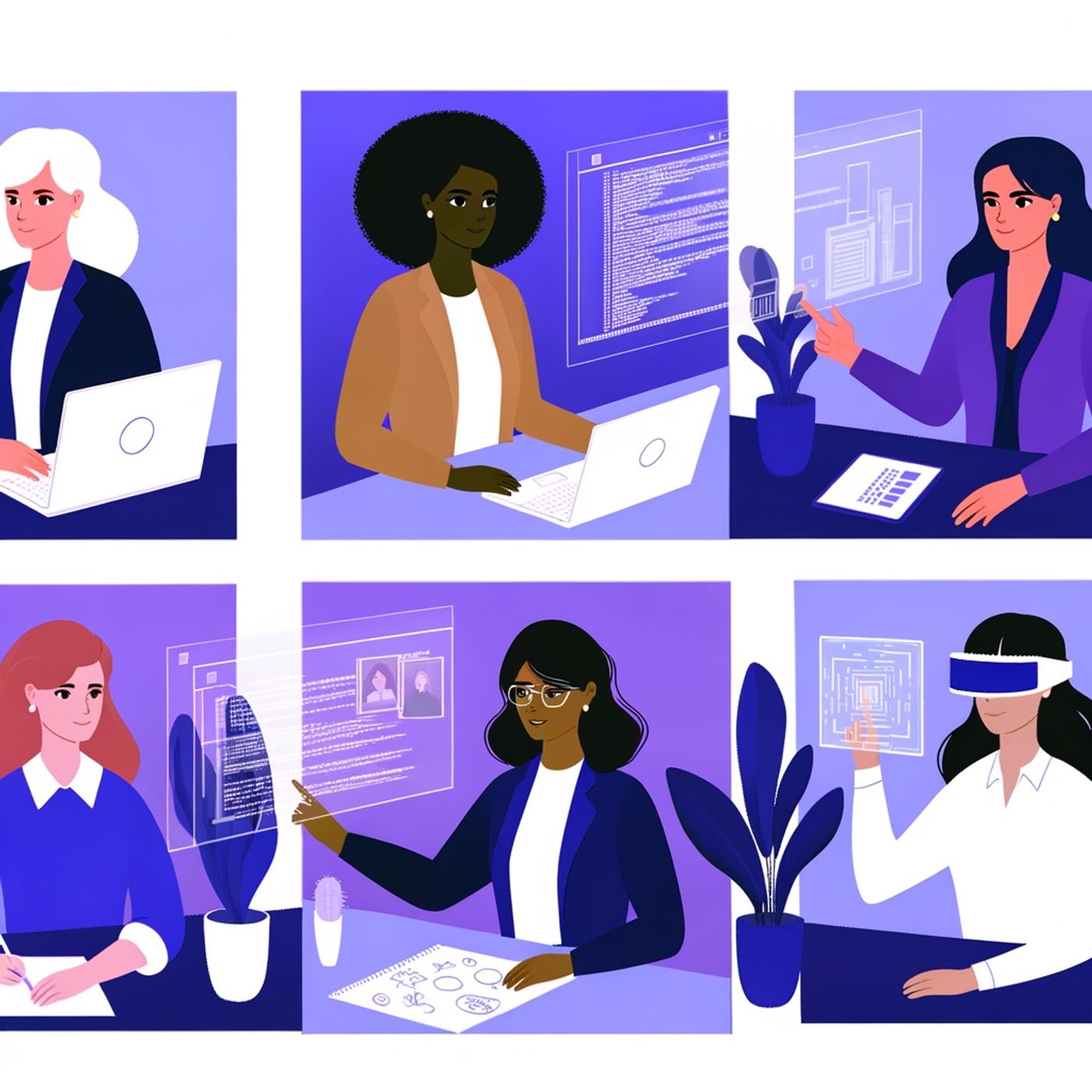Podcast Episode Details
Back to Podcast Episodes
Tech's Uneven Terrain: Navigating Gender Gaps and New Pathways
This is your Women in Business podcast.
Welcome back to Women in Business. Today, I want to invite you into a candid conversation about what it really means to be a woman navigating the economic landscape of the tech industry right now. Let’s skip the small talk and look squarely at the data, experiences, and—most importantly—our opportunity for impact.
Let’s start with presence. Although women make up nearly half the global workforce, only about 26% of the tech workforce is female, according to recent numbers from CompTIA and global research. Even within the giants—places like Apple, Google, and Microsoft—women rarely fill more than a third of roles, and in core technical jobs, it’s often less than 25%. When it comes to the C-suite, the picture narrows further: only about 8% of CTOs and 17% of tech CEOs are women, and none of the so-called Big Five—Google, Apple, Meta, Amazon, or Microsoft—have ever had a female CEO. That stark spotlight, listeners, is our first discussion point: representation and the persistent gender gap, especially at leadership levels.
But let’s get real about culture, too. Over 70% of women in tech recently reported encountering a so-called “bro culture” at work—a climate where male networks dominate and advancement can hinge on connections women are often denied access to. More than half of women surveyed by the WomenTech Network cited discrimination or harassment that held back their careers. The result? By age 35, half of all women who work in tech have left the industry. That leads us into our second big point: workplace culture and its quiet cost, from burnout to exclusion.
So, what about the pipeline? Fewer women are pursuing computer science than thirty years ago. The proportion of women earning tech-related degrees in the U.S. has dropped from 37% in 1985 to around 21% today. The reasons run deep: from early education gaps, lack of role models—think Reshma Saujani with Girls Who Code trying to change this—and a perception that tech is “not for women.” So our third discussion point must be about education, access, and the imperative to build sustainable pipelines.
Then there’s the pay gap. On average, men in tech earn about $15,000 more than women in similar roles. Promotion rates lag too; for every 100 men promoted to manager, just 87 women move up. And with scarce mentorship and opaque advancement processes, those gaps become chasms. Our fourth theme is the combined challenge of pay equity, promotion, and the quest for transparent advancement.
But here’s a silver lining worth spotlighting. Remote work has started to shift the field, offering more flexibility and sometimes expanding opportunity—though, as we saw during the pandemic, it also brought unique burnout risks. Meanwhile, the rise of AI and digital tools is giving women new pathways to contribute and innovate. Around 40% of women in tech now use Gen AI at work, with nearly three-quarters saying it’s boosted their productivity. Our fifth discussion point, then, is about new opportunities and the ways women are leveraging change to build resilience and power.
To everyone listening: your presence, energy, and feedback help us drive this overdue conversation forward. Thank you for tuning in, and don’t forget to subscribe so you never miss an episode. This has been a quiet please production, for more check out quiet please dot ai.
For more http://www.quietplease.ai
Get the best deals https://amzn.to/3ODvOta
Published on 5 days, 7 hours ago